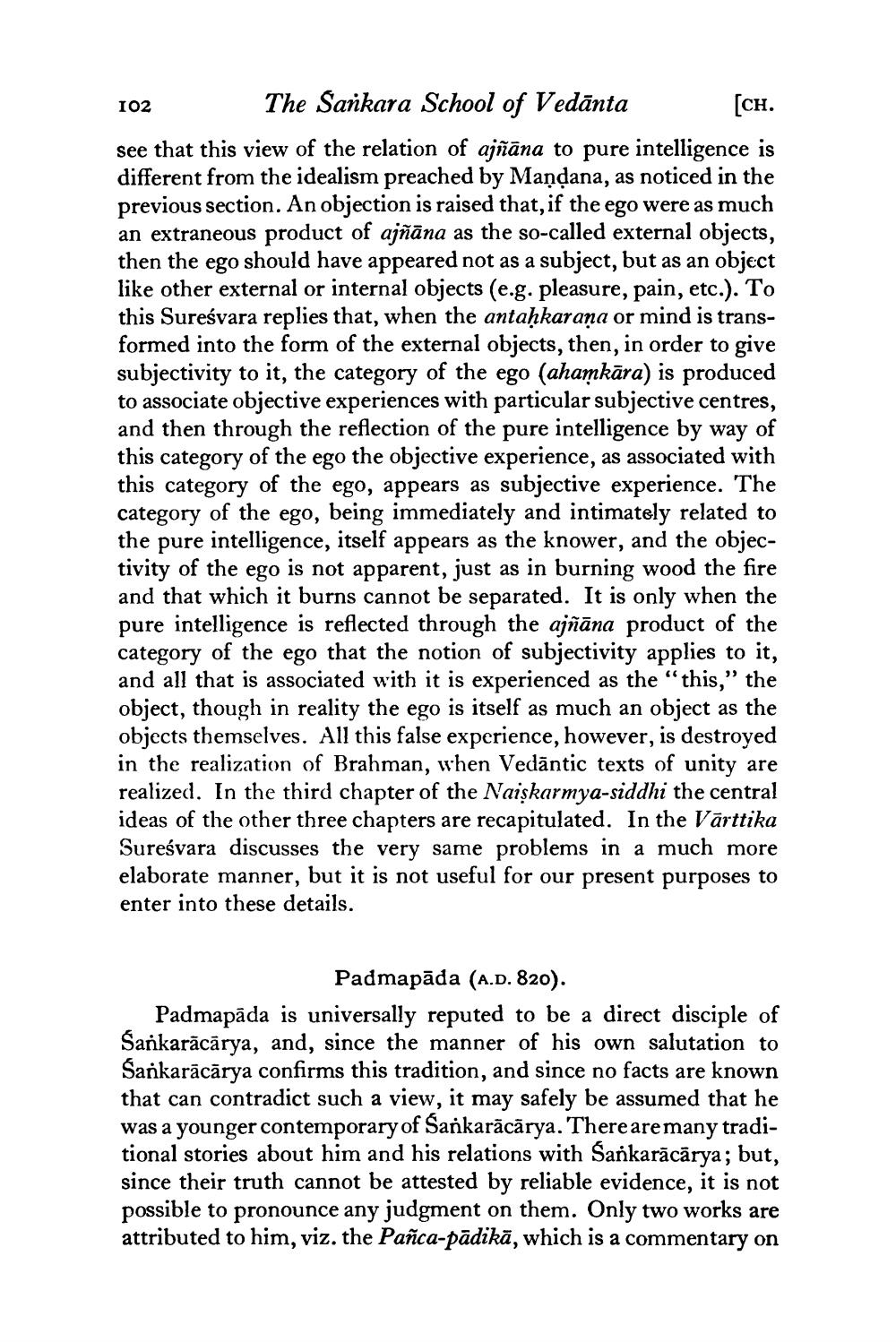________________
102
The Sankara School of Vedānta [CH. see that this view of the relation of ajñāna to pure intelligence is different from the idealism preached by Mandana, as noticed in the previous section. An objection is raised that, if the ego were as much an extraneous product of ajñāna as the so-called external objects, then the ego should have appeared not as a subject, but as an object like other external or internal objects (e.g. pleasure, pain, etc.). To this Sureśvara replies that, when the antaḥkaraņa or mind is transformed into the form of the external objects, then, in order to give subjectivity to it, the category of the ego (ahamkāra) is produced to associate objective experiences with particular subjective centres, and then through the reflection of the pure intelligence by way of this category of the ego the objective experience, as associated with this category of the ego, appears as subjective experience. The category of the ego, being immediately and intimately related to the pure intelligence, itself appears as the knower, and the objectivity of the ego is not apparent, just as in burning wood the fire and that which it burns cannot be separated. It is only when the pure intelligence is reflected through the ajñāna product of the category of the ego that the notion of subjectivity applies to it, and all that is associated with it is experienced as the "this,” the object, though in reality the ego is itself as much an object as the objects themselves. All this false experience, however, is destroyed in the realization of Brahman, when Vedāntic texts of unity are realized. In the third chapter of the Naiskarmya-siddhi the central ideas of the other three chapters are recapitulated. In the Vārttika Sureśvara discusses the very same problems in a much more elaborate manner, but it is not useful for our present purposes to enter into these details.
Padmapāda (A.D. 820). Padmapāda is universally reputed to be a direct disciple of Sankarācārya, and, since the manner of his own salutation to Šankarācārya confirms this tradition, and since no facts are known that can contradict such a view, it may safely be assumed that he was a younger contemporary of Sankarācārya. There are many traditional stories about him and his relations with Sankarācārya; but, since their truth cannot be attested by reliable evidence, it is not possible to pronounce any judgment on them. Only two works are attributed to him, viz. the Pañca-pādikā, which is a commentary on




